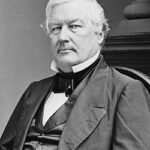The Strategic Decision to Open Trade Japan
President Millard Fillmore made one of America’s most visionary foreign policy decisions in 1852. He authorized Commodore Matthew Perry’s peaceful mission to Japan. This bold initiative aimed to end Japan’s 250-year isolationist policy known as sakoku. 📊 The expedition represented a calculated diplomatic gamble that would reshape Pacific relations.
Peaceful Diplomacy Over Military Force
Fillmore’s approach emphasized negotiation rather than conquest. Perry’s fleet carried gifts and technological demonstrations instead of threats. The mission included steam-powered warships that showcased American industrial progress. 💰 Economic opportunity drove the decision, as California’s gold rush increased Pacific shipping needs.
Strategic Pacific Expansion
The president recognized Japan’s strategic importance for American commerce. Whaling ships needed Pacific refueling stations and safe harbors. Opening trade Japan would provide crucial supply points for growing trans-Pacific commerce. ⚠️ Fillmore understood that European powers were also eyeing Japanese markets, making swift action essential.
Impact:
Immediate Success of Opening Trade Japan
Perry’s mission achieved remarkable success in 1854 with the Treaty of Kanagawa. Japan opened two ports to American ships for supplies and trade. The agreement provided protection for shipwrecked American sailors. 🌍 This peaceful breakthrough demonstrated American diplomatic skill on the world stage.
Long-term Economic and Cultural Transformation
The trade agreement triggered Japan’s rapid modernization during the Meiji Restoration. American technology and ideas flowed into Japanese society. 💰 Bilateral trade grew exponentially, benefiting both nations’ economies. Japanese students began studying in American universities, fostering cultural exchange.
Establishing America as Pacific Power
Fillmore’s decision positioned America as a major Pacific influence. The success encouraged further expansion into Asian markets. 🔥 Other Western nations followed America’s example, ending Japan’s isolation completely. The mission proved that diplomatic engagement could achieve more than military intimidation. This peaceful approach became a model for future American foreign policy initiatives.
